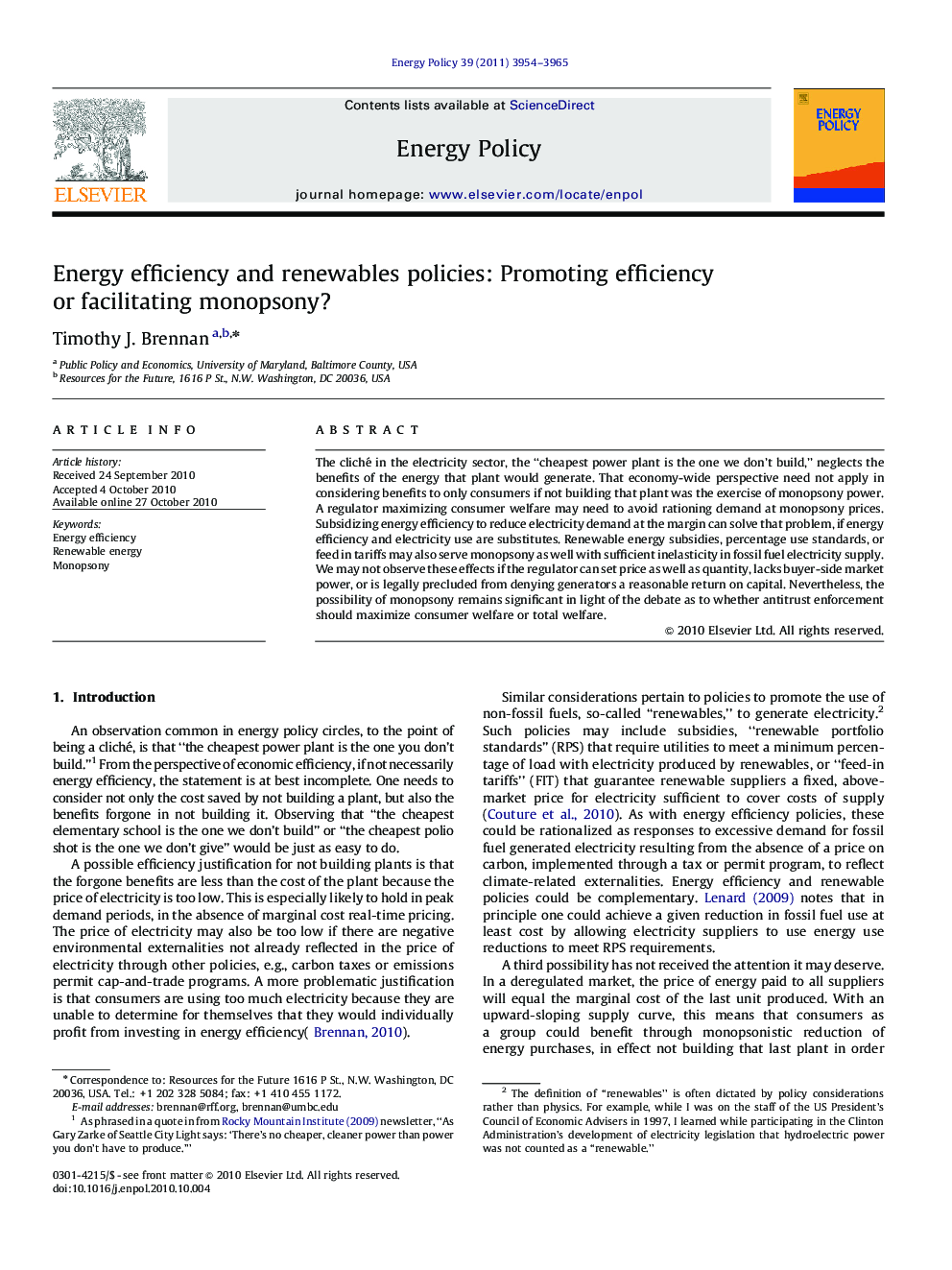| Article ID | Journal | Published Year | Pages | File Type |
|---|---|---|---|---|
| 993481 | Energy Policy | 2011 | 12 Pages |
The cliché in the electricity sector, the “cheapest power plant is the one we don’t build,” neglects the benefits of the energy that plant would generate. That economy-wide perspective need not apply in considering benefits to only consumers if not building that plant was the exercise of monopsony power. A regulator maximizing consumer welfare may need to avoid rationing demand at monopsony prices. Subsidizing energy efficiency to reduce electricity demand at the margin can solve that problem, if energy efficiency and electricity use are substitutes. Renewable energy subsidies, percentage use standards, or feed in tariffs may also serve monopsony as well with sufficient inelasticity in fossil fuel electricity supply. We may not observe these effects if the regulator can set price as well as quantity, lacks buyer-side market power, or is legally precluded from denying generators a reasonable return on capital. Nevertheless, the possibility of monopsony remains significant in light of the debate as to whether antitrust enforcement should maximize consumer welfare or total welfare.
Research Highlights► Subsidizing energy efficiency can promote monopsony, if efficiency and use are substitutes. ► Renewable energy subsidies, portfolio standards, or feed-in tariffs may also promote monopsony. ► Effects require buyer-side market power and ability to deny generators a reasonable return. ► Monopsony is significant in light of whether antitrust should maximize consumer or total welfare.
